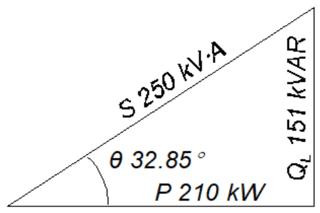If you over-correct your power factor, that is your power factor is leading, not lagging as expected by the utility, can you damage your (as opposed to the utility's) equipment?
As we are all aware, Power Factor is the ratio of the actual electrical power being consumed in Watts and the apparent power, in VA (Volt-Amps). This site has a good description. The power factor angle, $\Phi$ can be expressed by:
$\Phi =sin(PF)$
The imaginary, reactive power $Q$ (from the power triangle), as measured in VAR (volt-amperes-reactive) can be expressed as
$Q=VA*cos(\Phi)$
While there are lots of snake-oil products around that use power factor correction to "save energy," power factor correction is a real concern for big consumers of electricity get charged for poor power factor. A big office building I used to work in had a kVAR-Hour meter in the basement. I was not involved with the billing but I imagine we got charged for kilowatt-hours and kiloVAR-hours.
This site says, "Overcorrecting power factor can lead to motor failure and costly equipment damage." I don't doubt that if you overcorrect and have a leading power factor, the utility will not be happy but causing damage? I can't see that happening.
If the web site were for anybody but a utility, I'd just roll my eyes and move on. In this case, I am quite confident that somebody at Cass County Electric Cooperative is solid in such matters but were they consulted in the preparation of the web site? Maybe, maybe not.
